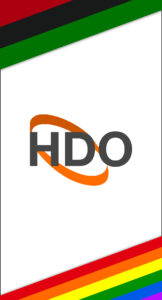 Change, recognition, and the organizational worlds from which they sprung.
Change, recognition, and the organizational worlds from which they sprung.
Amy Ware, PhD
Director, Human Dimensions of Organizations
&
Amy Nathan Wright, PhD
Assistant Professor of Instruction, Human Dimensions of Organizations
June 22, 2021
With the recent declaration of Juneteenth as a federal holiday and the expanding celebrations of LGBTQ+ communities, more and more people are becoming not only aware of these important celebrations, but also of the complexity of their origins, the communities they represent, and their meanings.
One central tenet of Human Dimensions of Organizations is to use analogic, or comparative, thinking so that we may apply one situation to another when considering organizational challenges. Without an accurate picture of events, however, we cannot effectively employ this analogical thinking. Both Juneteenth and Pride Month reveal that often broad transformations begin from within communities pushing for change and recognition. We must recognize the limits of our knowledge, and dig deeper, to recognize the complexity of these events and the ways in which these celebrations can teach us about the organizational worlds from which they sprung.
Even those who grew up in Texas rarely learned about Juneteenth from our teachers or textbooks, while the memory was kept alive in the Black community that it impacted so deeply. Until recently, Juneteenth celebrations were family or community holidays left unknown to many outsiders. And while today the Pride flag and Pride parades exist even in small, conservative towns, few are aware of the month’s roots in activism. Again, the origins of these events and how they were seeded by the communities that nurtured and celebrated them must be understood to fully grasp their significance.
On June 19th, 1865, Major General Gordon Granger reportedly informed enslaved Texans in Galveston that they were free, more than two and a half years after President Lincoln issued the Emancipation Proclamation. Despite the fact that Black Texans have celebrated since this remarkable day, many other Texans have never been taught the roots of this now national holiday, and when the story was told, as so often is the case, it was a bit off. For instance, historian Gregory P. Downs reveals that most, if not all, enslaved people knew they were free; the problem was that their enslavers had not set them free. The message from Granger was for those who owned the enslaved, and it was coming from the end of the barrel of the guns in the hands of Union Soldiers, most of them Black men who were part of the U.S. Colored Troops,
Houston-based public artist Reginald C. Adams communicates the depth of Juneteenth’s meaning in a new 5,000 square foot mural in Galveston, titled “Absolute Equality,” in honor of the promise of the declaration of General Order No. 3 by Granger, which declared not only that the enslaved men, women, and children were now free, but also the following: “This involves an absolute equality of personal rights and rights of property between former masters and slaves, and the connection heretofore existing between them becomes that between employer and hired labor.” While this Order speaks to the equality this nation still strives for, when read in full, it demonstrates the half steps the nation took: “The freedmen are advised to remain quietly at their present homes and work for wages. They are informed that they will not be allowed to collect at military posts and that they will not be supported in idleness either there or elsewhere.” While we celebrate Juneteenth wholeheartedly, and cheer the recognition of this important date as a national holiday, Frederick Douglass’ question, “What to the Slave is the Fourth of July?” still rings loudly as Juneteenth is being embraced at the same moment voting rights are under assault across the nation.
Similarly, while many know about Pride parades or have grown accustomed to seeing rainbow colored clothing and accessories in their favorite corporate chain store, fewer know about the roots in the 1969 uprising at the Stonewall Inn in Greenwich Village, and even fewer know the names of Marsha P. Johnson and Sylvia Rivera, the Black and Latinx leaders of this spontaneous response to repeated state-sponsored police violence. What started as a human rights movement to combat homophobia, transphobia, and violence against the LGBTQ community, as well as a long list of other inequities, has morphed over the decades and in different places.
Debates have raged in Austin over how to celebrate Pride, vacillating from the radical, activist, Queerbomb that highlights diversity and variety of Austin’s LGBTQ+ communities to the family-friendly, often corporate-sponsored Pride parade and festival put on by the Austin Gay and Lesbian Pride Foundation. Both celebrations now coexist with the radically queer Queerbomb in June, as are pride marches around much of the nation and the world, and Austin’s Pride parade and festival, which since 2011 has been held in August. The spectrum that these two events represent demonstrates that there is room for everyone to celebrate the LGBTQ+ community in their own way, and more importantly space for all of us to support the rights and freedom of all our neighbors.
When we embrace the richness, diversity, and complexity of our shared history, the healthier we become as a nation. Rather than try to eliminate elements of our national and global stories that make us uncomfortable, we will be better equipped to solve the increasingly challenging problems of our present and future by listening to voices from our most vulnerable and marginalized communities so we can discover and acknowledge the gaps in knowledge that must be filled in order to solve the wicked problems we face.

